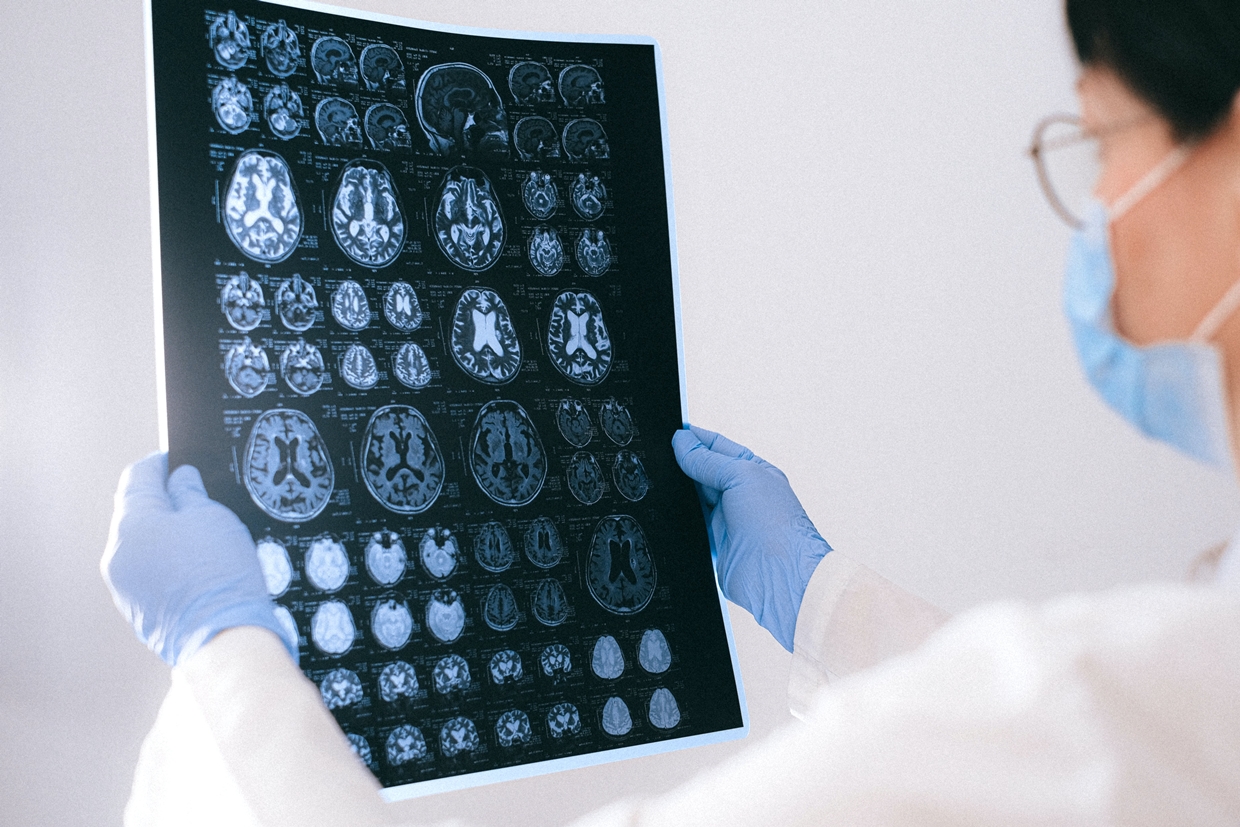Explore Neurofeedback Research: Making It Accessible
We selected a range of studies on both traditional and Dynamical neurofeedback to guide you in making well-informed decisions for your brain health.

Tinnitus and Neurofeedback
Dynamical Neurofeedback® Neuroptimal®: A New Approach to Improve the Perception of Tinnitus Through Cerebral Self-Regulation
Abstract
Our research evaluates NeurOptimal®'s effectiveness on tinnitus patients. Preliminary results indicate promising improvements in tinnitus perception and related symptoms, suggesting NeurOptimal®'s potential based on brain self-regulation and neuroplasticity principles. Further study on a larger sample is needed.
FAQs
Does neurofeedback therapy work?
NeurOptimal® neurofeedback therapy works by training the brain to recognize its maladaptive patterns in real time. It is essential brain training to optimize performance. It is an effective and non-invasive brain training method that improves the overall functioning of the central nervous system.
Read reviews, watch our videos and learn more about the effectiveness of neurofeedback therapy and how many sessions one should do.
How legit is neurofeedback?
Neurofeedback therapy, established in the 1950s, has been extensively researched and applied across various conditions. Studies have demonstrated its positive impact on stress-related issues, including improvements in sleep, cognitive function, and emotional regulation. Beyond these areas, neurofeedback has been explored for its potential benefits in managing:
Attention-Deficit/Hyperactivity Disorder (ADHD): Research supports neurofeedback as an effective intervention for reducing symptoms of inattention and impulsivity in children with ADHD.
Anxiety and Depression: Meta-analyses indicate that neurofeedback and heart rate variability biofeedback are associated with reductions in self-reported depression and anxiety symptoms.
Post-Traumatic Stress Disorder (PTSD): Emerging studies suggest neurofeedback may aid in alleviating PTSD symptoms by enhancing emotional regulation.
Epilepsy: Neurofeedback has been investigated as a complementary therapy for reducing seizure frequency in individuals with epilepsy.
Tinnitus and Brain Fog: Recent research is exploring neurofeedback's potential in managing tinnitus and cognitive impairments like brain fog.
For a comprehensive overview of neurofeedback research, consult the National Library of Medicine.
As research progresses, neurofeedback continues to show promise as a non-invasive intervention for various neurological and psychological conditions.
What therapy goes well with neurofeedback?
Neurofeedback works by giving feedback to the brain about its maladaptive brainwaves so that the brain can engage in applied neuroplasticity, i.e., use that information to rewire itself for more positive, healthy adaptive response patterns. Considering that goal, therapies that help support overall brain health are beneficial. It’s like studying music - in addition to playing, if you strengthen your hand muscles, it’s going to support you as you learn more complex chords. These supporting therapies may include chiropractic care, nutritional support, physical therapy, or an exercise program. Again, any modality that supports and provides overall brain health is going to help sustain the positive changes you make through neurofeedback work.
Depending on why a person is seeking neurofeedback, therapies that help with improved emotional and cognitive skills are also beneficial. Brain training for improved memory, executive functioning coaching, psychotherapies including trauma therapy, cognitive/behavioral therapy (CBT) can also benefit the individual. Studies show that taking a multipronged approach to health is more effective and helps people reach their goals sooner.
What is the success rate of neurofeedback?
Once you understand how neurofeedback works it’s easier to understand the potential benefits this form of brain training offers and, why it could potentially be a helpful training method for you. The success rate quoted by clinicians is commonly 75-80% but – bear in mind, neurofeedback has not been mainstream long enough for there to be the extensive studies needed to report absolute success rates with 100% certainty. It's also important to know that currently there are no studies comparing the success rate between different neurofeedback devices. Of course, there are going to be variables in that reporting according to the machines tested - and that's going to bear out important results as those results are aggregated.
What does neurofeedback do to your brain?
In general, neurofeedback measures the brain’s electrical output to assess brainwaves that are signifying a meaningful change in the brain’s activity. The devices use auditory and/or visual cues to alert the brain to its activity so that it can change towards greater health and resiliency. Some systems use positive feedback to reward change. Though most systems are not actively adding anything to the brain, some neurofeedback devices add a micro-current to the brain to help it shift out of maladaptive brainwaves. Through whichever means of feedback is used, the brain is designed to utilize information to improve its functioning. It does so through using different electrical frequencies and by growing new neural pathways, what we call applied neuroplasticity. In other words, the brain is designed to, and can, rewire itself to function differently.
Can neurofeedback have negative effects?
The most common side effects of neurofeedback are headaches and feeling heaviness or fatigue. Every brain is different and everybody has different responses to emotional change, so it's only natural the effects will vary from person to person. However, neurofeedback does not produce side effects when applied properly. With protocol or linear neurofeedback, the side effects are more common because the design of these systems is to force brainwave patterns to change. When doing linear neurofeedback, which requires a brain map before beginning sessions, it is important to train with a skilled clinician who knows how to entrain the brain waves without going to extremes that may lead to feeling temporary agitation or heaviness.
Some clients may experience negative effects, but they often occur due to underlying issues that are amplified through the training. For example, occasionally people will feel headache after a session if they have not had enough water to drink that day. Or some people feel sleepiness and even exhaustion if they’re already chronically sleep-deprived. But none of these side effects are permanent and they usually last only a few hours. But all feedback is helpful. Information gleaned from these temporary negative effects is very helpful in understanding other areas of the client’s health that need attention, such as diet and sleep.
Are neurofeedback changes permanent?
The results from brain training with neurofeedback should be long-lasting for anyone, across any age range. In general, the results in children are faster and more stable. This is perhaps due to the fact that children’s brains are still developing and have billions of unassigned neurons that still need to create connections between brain regions. In effect, kids' brains are still wiring themselves – so any input may more easily become part of their brain architecture, from an earlier age.
Factors that can impact whether the changes are permanent include: the number of neurofeedback sessions, whether there are underlying untreated health issues, future health issues such as a stroke, and acute stressors or traumatic events. If someone has new injuries or stressors, doing tune-up neurofeedback sessions can be very helpful. Clients who previously have had sessions will respond more quickly and see the benefits faster. Like having learned to ride a bike, even if it’s been ten years, you quickly remember. Neurofeedback is similar in that it is a learned practice. Once the brain’s created neural pathways, even if they’ve been underused, the brain will quickly seek them out and begin essentially, refreshing them.
How many sessions of neurofeedback do I need?
The number of sessions varies depending on the reason for training and the system being used. In general, though, neurofeedback trainers recommend doing a series of sessions, usually 20-40 spread out over a period of two to three months. During that time, the trainer will be looking for stability in the changes to ensure that the brain has shifted and now has adaptive habits in place, before determining how many, or if any further sessions are needed. With protocol neurofeedback, a second QEEG brain map might be done to see if there are still maladaptive brain waves once the standard number of sessions has been completed. In general, the client will notice the positive changes and experience them as relatively stable before deciding to stop altogether. However, it’s not uncommon for some clients to do tune-up sessions periodically, especially if there are new stressors. Again, it’s like any training – if you feel you may be sliding back into old patterns, a few sessions may give you the boost to get back on top of your training, and your life.
How safe is neurofeedback?
Neurofeedback is very safe, especially the systems that are purely feedback and do not add anything to the brain. The safest design currently, is the Dynamical neurofeedback. This is because the individual’s brain decides how to use the feedback regarding its habitual choices without being nudged or guided through operant conditioning. The second safest devices are the protocol systems that kind of, “nudge”, the brain through positive feedback. The systems that are micro-current stimulation devices, such as LENS, are still very safe, though need to be administered by a trained professional and are not appropriate for all ages.
How effective is neurofeedback for anxiety?
Neurofeedback is an effective support for managing anxiety, especially when combined with additional supports like a whole-food diet, exercise, and sleep management. Anxiety is the fight/flight reaction of the stress response and when it becomes a chronic habit, we call it anxiety. The brain is supposed to only go into the fight/flight reaction for short bursts to respond to immediate danger and then return to the regulated state of perceived safety. Research shows being in this hyperarousal state takes a lot of energy and taxes the body’s other systems, such as the immune system. Neurofeedback helps with managing the stress response by showing the brain in real-time, its habitual patterns. The theory behind neurofeedback is that when the brain is cued to perceive habits that are maladaptive like stress, the brain will shift to more adaptive strategies, like calm/focus energy rather than fight/flight energy. When those strategies are engaged in regularly, they become a new habit replacing the stress reaction. Remember, the brain is adaptive, dynamic and responds to change – neurofeedback is what signals it to adapt to more positive, helpful changes.
Is neurofeedback approved by the FDA?
Approval by the FDA to make claims to treat specific medical conditions is done on a product-by-product basis. Some neurofeedback devices are approved as medical devices for the purpose of relaxation, depression, anxiety, and ADHD. If they are approved as medical devices, they must be administered by licensed healthcare providers. Other neurofeedback devices are designated as General Wellness Devices for general wellness and can be operated and purchased by consumers. Under this latter designation, the consumer does not need to be under the care of a healthcare provider to use the device.
Is neurofeedback therapy evidence based?
Neurofeedback is an evidence-based methodology. There are many studies on neurofeedback’s benefits. Though the field is not established enough to have double-blind placebo-controlled studies (the gold standard of evidence-based tools) those studies will come as the preliminary ones warrant expanded research. Thus far in the field of neurofeedback, there is promising research on a variety of conditions such as addictions, ADHD, PTSD, and stress.
Can neurofeedback be reversed?
The negative side effects of neurofeedback can be reversed. Because the process of giving the brain feedback about its habits is expressed through its electrical activity (brainwaves) the changes are incremental and ultimately controlled by the individual’s brain and not an ongoing force. If through the neurofeedback protocols the brain is overtrained, negative effects such as feeling lethargic or anxious can be reset by the brain as it re-regulates from being ‘pushed’ once the training session is over. The protocols can be refined to give the correct feedback to produce the desired results.
Can neurofeedback be done remotely?
Neurofeedback can be done remotely with some of the devices – however, not all are designed for home use. Protocol neurofeedback is not recommended for remote sessions because the device must be set with protocols by a trained professional each session. The NeurOptimal® system has a technology called AutoNav which makes the training fully automated and tailored for each individual session. Presently, AutoNav is unique to NeurOptimal because it is the only Dynamical neurofeedback system.
What can I expect from neurofeedback therapy?
Neurofeedback therapy is typically done in an office environment with a trained professional. The sessions tend to be anywhere from 3-45 minutes in length, using EEG sensors attached to the head. Different systems use a different number of sensors to track the electrical brain wave communication essential for giving precise feedback. The feedback is given either through visual or auditory cues. These cues signal the brain to reset its maladaptive brainwave patterns that produce symptoms. The sessions are painless and usually result in noticing subtle changes in sensation or perception. Over the series of sessions (which vary depending on the reason for training) the changes become more noticeable. The positive results include changes in cognitive functioning such as mental clarity and focus; and emotional states such as calm, elevated mood, and emotional regulation.
Can you do neurofeedback daily?
Yes, you can train daily using neurofeedback sessions with the NeurOptimal® system. Each neurofeedback device has a different design and not every system is appropriate for daily use. The NeurOptimal system is appropriate to use daily because it's non-invasive and designed to create positive change as the brain learns new adaptive behaviors through repetition. In the same way, you learn a language more quickly through daily use, NeurOptimal can be beneficial for use daily. It is not essential to see results but for some individuals, daily use in the beginning or during acute periods of stress can be helpful.
What is the feeling after doing neurofeedback?
The feelings after completing a neurofeedback session vary from person to person depending on factors such as the number of previous sessions, current health issues, and the degree of sensitivity to subtle changes in the body. Typical feelings after neurofeedback include calmness, less pain, tiredness, or heaviness in the body, and increased vivid sense perceptions (such as clearer visuals or sharper auditory sensations). It’s not uncommon for some people to not notice or report immediate effects. For some, the after-effects may not present until the following day as they notice clearer perceptions, greater focus, calmness, and feeling more grounded. Sometimes people notice a spike in emotions, but they are short-lived and normal, as the brain changes itself in a non-linear process so there can be variability in feelings after a session.
Didn’t find your subject?
A more extensive search can be done on National Institute of Health’s Pubmed website.




